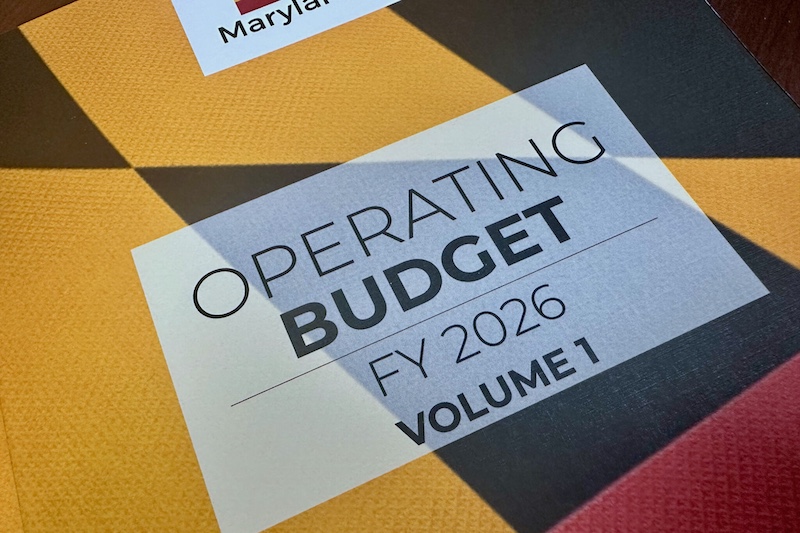Passing a budget took longer than usual this year. This time, however, it was ongoing federal budget cuts and a congressional debate over spending that dragged on and had fiscal leaders making corrections in real time.
The House and then the Senate on Monday ratified a conference committee agreement on a $67 billion overall spending plan for fiscal 2026 over the objections of Republican members, who could do little to stop the package.
The plan includes what supporters frame as budget cuts — holding vacant positions open and shifting costs to the counties plus other moves — and $1.6 billion in new taxes and fees, including two new high-income tax brackets and a new 3% sales tax on IT and data services.
“From the poor to the middle class, to the upper middle class,” Minority Leader Del Jason C. Buckel (R-Allegany) said. “I’m telling you that at the end of the day, this will be one of the worst votes that almost any of you will ever have taken – but we’re going to do it anyway.”
The House passed the budget 101-39, and the companion reconciliation bill, which contains the tax increases, 94-46.
The Senate followed the House, passing both bills by votes of 33-14 and 29-18, respectively.
All votes fell mostly, if not entirely, along party lines.
Senate Budget and Taxation Chair Guy Guzzone (D-Howard) said that the budget agreement “puts Maryland in a strong fiscal position in the face of the challenges ahead, protecting our shared values and priorities.”
But Senate Minority Whip Justin Ready (R-Frederick and Carroll) said there was a “difference of viewpoint” in how the state should handle taxpayer money.
“There’s a difference of viewpoint here … between the idea that people give us their money, and we’re supposed to try to be good stewards of it,” Ready said, “And then there’s this attitude of … where the money is really, the government’s, and we’re going to decide how much we’re going to let people keep and how much you’re going to have.”
The overall budget for fiscal 2026 is just over 1% larger than the current year’s. The general fund budget — the portion for which the state directly taxes Maryland residents — is about $400 million smaller.
Even so, the Democratic supermajority passed a spending plan that included $1.6 billion in taxes and fees.
In addition to two new higher income tax brackets, there is some small tax relief. Lawmakers said 92% of taxpayers will see a refund or at least no increase in their income taxes.
“We’ve got to make sure we are reforming the tax code and not on the backs of middle-class families,” Gov. Wes Moore (D) told reporters Monday afternoon. “I want middle-class families to get a tax cut. Period and full stop. Anything that was not going to adjust on that was not going to be acceptable.”
For those who see a tax break, it will run between $50 and $65 on average.
Moore’s plan, as proposed in January, included a plan that promised to cut or at least not increase taxes for 60% of Marylanders. The average tax break on that plan was about $173.
The governor has not said if the final plan passed by lawmakers provides the breathing room for which he hoped.
Democrats praised the budget for resolving a projected $3 billion structural budget deficit for fiscal 2026. The plan is also said to have reduced a similar sized fiscal 2027 structural deficit to a manageable $300 million.
by Bryan P. Sears and Danielle J. Brown, Maryland Matters
April 7, 2025
Maryland Matters is part of States Newsroom, a nonprofit news network supported by grants and a coalition of donors as a 501c(3) public charity. Maryland Matters maintains editorial independence. Contact Editor Steve Crane for questions: [email protected].




Write a Letter to the Editor on this Article
We encourage readers to offer their point of view on this article by submitting the following form. Editing is sometimes necessary and is done at the discretion of the editorial staff.